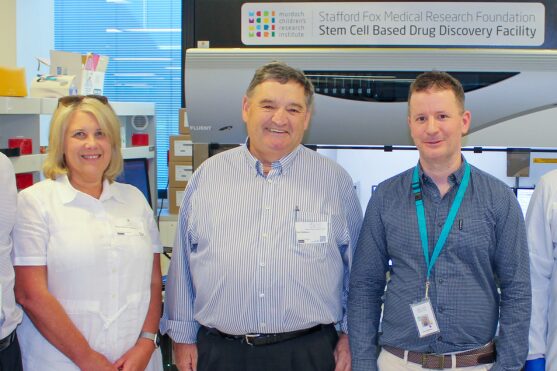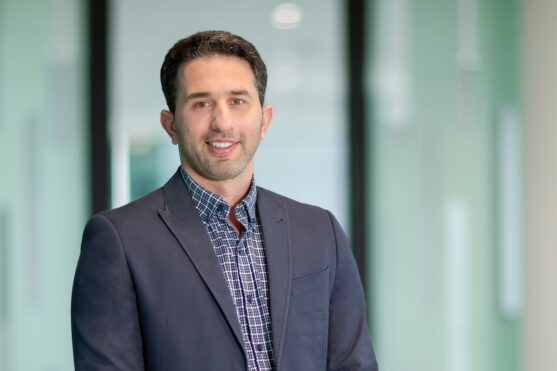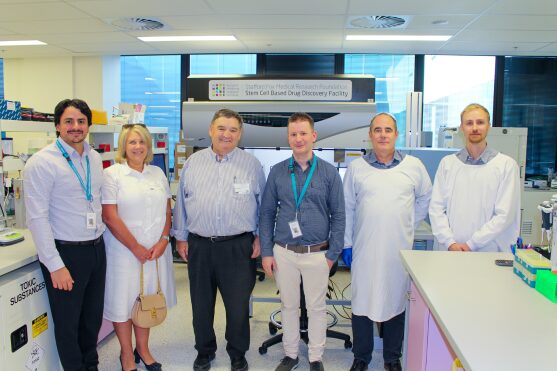Hopes for a breakthrough in childhood diseases underpinned by 10-year funding relationship

An enduring relationship has formed between the Stafford Fox Medical Research Foundation (SFMRF) and Murdoch Children’s Research Institute (MCRI) over a decade. It has been attributed to enabling the latter to develop world-first research into stem cell medicine that could result in treatments for rare or currently incurable and devastating childhood diseases, including heart disease and brain cancer.
The milestone was hit earlier this year when SFMRF delivered further funding that has so far amounted to more than $12 million in the period for ongoing projects and infrastructure, including the development of the Stem Cell Based Drug Discovery Facility.
The SFMRF funding has supported the Inaugural Stafford Fox Fellow, held by Professor Enzo Porrello, and the acquisition of cutting-edge technology to study potential new treatments for diseases from medulloblastoma (Australia’s most common childhood brain cancer) to muscular dystrophy. These combined advancements have enabled MCRI to join two other world-leading institutions in Denmark and the Netherlands to form the Novo Nordisk Foundation Center for Stem Cell Medicine, known as reNEW.

Enzo says: “Our researchers are world leaders in reprogramming stem cells, that can be taken from any individual, into a range of different human cells relevant to all the medical conditions and diseases on which we are working. The Drug Discovery Facility supports this research towards translation.”
The Facility employs a custom-built robotic system alongside advanced stem cell production capabilities. This innovative approach enables MCRI to screen hundreds of compounds a day, a process that would otherwise require significant manual effort, meaning faster answers for patients and potentially better treatments for childhood conditions, from autism and genetic heart and kidney disease, to type 1 diabetes.
“We’ve developed models of heart, brain and kidney cells and they provide us with a really powerful window into human biology and disease processes that we can use as a platform for treatments. The facility is the only one of its kind in Australia, which is what has really put us on the map internationally and enabled the reNEW collaboration in Europe.”
reNEW is funded by the Novo Nordisk Foundation, one of the largest philanthropic organisations in the world, with a net worth in 2022 of around A$170 billion. Enzo says that MCRI would not be in this position without the support of Stafford Fox and the ongoing investments, which “really provided the foundations to help us build our research program and its tremendous growth”.
The Stem Cell Medicine department, which includes the Drug Discovery Facility, has grown from four researchers just over a decade ago to more than 250 researchers and students today. This growth has been built with those targeted investments from Stafford Fox.
“They have been there from the beginning,” adds Enzo.
Many stem cell experts utilise the Melbourne facility, and bring with them funding from a range of other sources, including the National Health and Medical Research Council, Medical Research Future Fund and other charities and foundations.
“This is just the beginning,” says Enzo. “Those platforms are what’s allowing us now to move that research closer to clinical application. Our hope is that this will allow us to drive drug and therapeutic treatments in the next 10 years.”
Medical and treatment breakthroughs from this research would affect many lives. The facility is working on a number of projects, including one with the MCRI Heart Disease Lab to screen for drug compounds that may stop damage to the heart that occurs when children (and adults) go through chemotherapy. It has also optimised protocols that can be used to study blood cancers, including leukemia, and developed a stem-cell derived “heart patch” tissue that is being tested pre-clinically to treat congenital heart disease.
The granting and review process between Stafford Fox and MCRI is a combination of traditional and trust-based reporting, but the focus is on nurturing the relationship and involving the trustees as milestones are achieved.
“We frequently invite the trustees on site to tour facilities and meet the people they’ve funded to really deepen those relationships. It’s important that we’re on the journey together and it’s equally rewarding for foundation trustees to see how the facilities have grown,” says Enzo. Members of the Stafford Fox team, which is based in Victoria, visited the institute in March. “Trust has certainly been one of the key factors that has sustained the relationship between MCRI and Stafford Fox.”

Intrinsic to the longevity of the relationship is the understanding that science takes time. Bringing developments such as these to fruition is a long-term investment. Enzo says that Stafford Fox’s support has also been “a massive opportunity” to leverage other philanthropic investments and inputs, particularly competitive grants.
The Drug Discovery Facility is embedded in The Royal Children’s Hospital, which provides a crucial insight into patient experience and perspectives. MRCI researchers are in regular contact with children affected by the illnesses they are researching through hospital advocacy groups, working closely with the patients, their clinicians and families. “It certainly hammers home the reality of the conditions we’re working on for the children and their families involved, and makes us acutely aware of the potential impact of our research,” says Enzo.
“To think of how we could dramatically change the outcomes for some children’s lives one day with treatments derived from our research is incredibly motivating.”